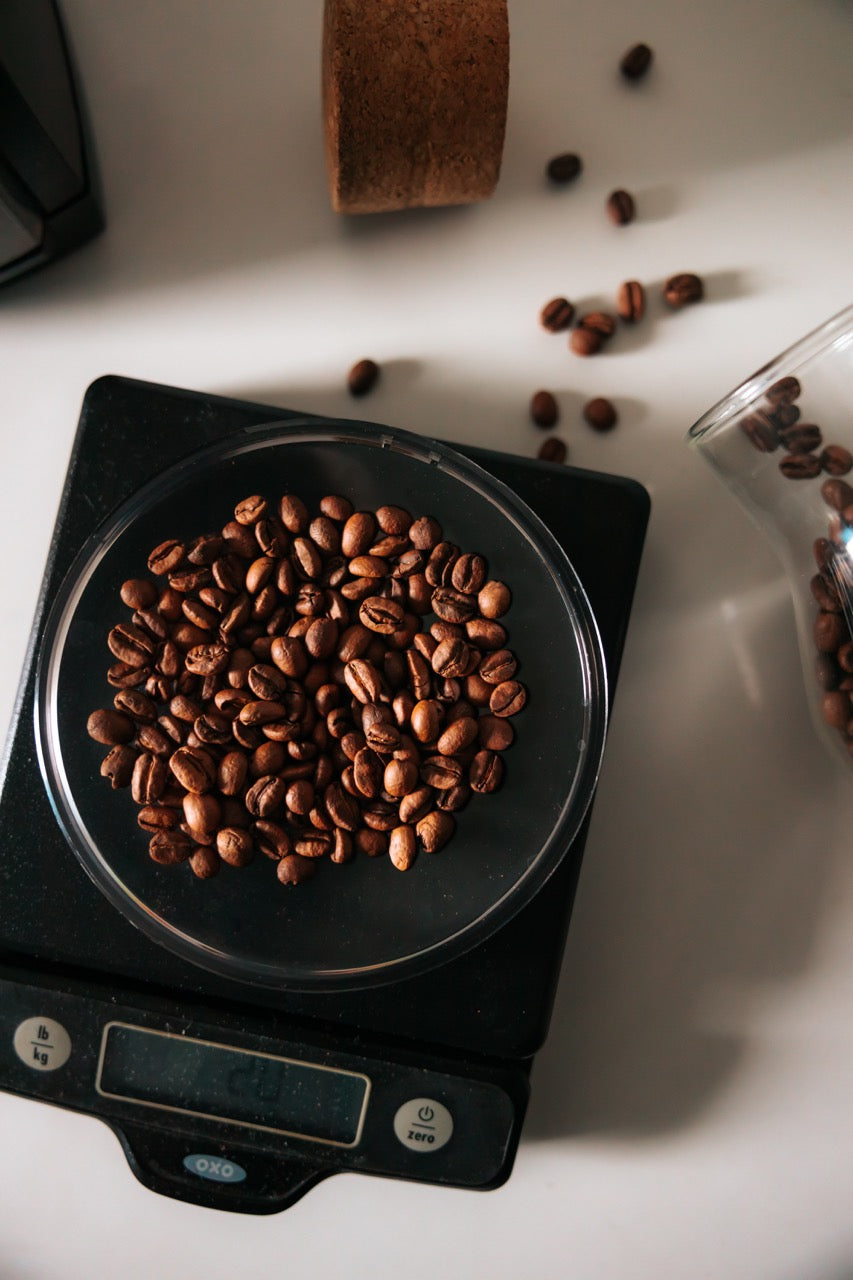
Coffee 101: Extraction

Extraction refers to the amount of soluble compounds from the coffee that are being dissolved into the water while brewing. Coffee is mainly made up of plant structural material, like cellulose and lignin, which are insoluble. Under normal circumstances, roughly 30% of all of the material in coffee can be extracted using hot water, and what’s left is just plant-matter. But it’s not all entirely delicious. Of this 30%, there are myriad compounds - lipids, carbohydrates, acids, melanoidins, phenols - but they’re not all very easily accessible with the brewing technology that most people have.
Filter coffee will generally range from 1.3% to 1.7% dissolved coffee. This means that 98.3% to 98.7% of the final brew is just water. Espresso is typically in the 8% to 11% range of dissolved coffee, meaning it’s still roughly 90% water.
These numbers correlate to the amount of coffee that’s in the brew, and from that we can determine how much of the ground coffee we’ve used to make our brew has been dissolved. We typically find most high quality coffees to taste great when we’ve extracted 20% to 24% out of the ground coffee. We find that most well roasted coffees will tend to exhibit a bit of a sour, starchy, thin vibe, with a lack of body and ripeness at low extraction. With really high extraction, you’ll probably start picking up some astringency and panadol-like bitterness with a furry tannic mouthfeel.
Keeping your brew ratio the same - 20g dose, 40g yield - you should be able to control the contact time by making your grind size smaller (for more time) and coarser (for less time). More contact time will generally equate to higher extraction given the same yield, and less contact time will generally equate to lower extraction.
Finding the optimal extraction for an individual coffee can be really difficult when you’re starting out, and most coffees will require pretty different dialling. Even the same coffee at different ages after the roast date will require different treatment. So keep tasting, keep exploring, keep dialling. There are no totally right or wrong answers, just keep working towards great flavour. Except, no ristrettos. Ristrettos are banned. ;)


Leave a comment
This site is protected by hCaptcha and the hCaptcha Privacy Policy and Terms of Service apply.